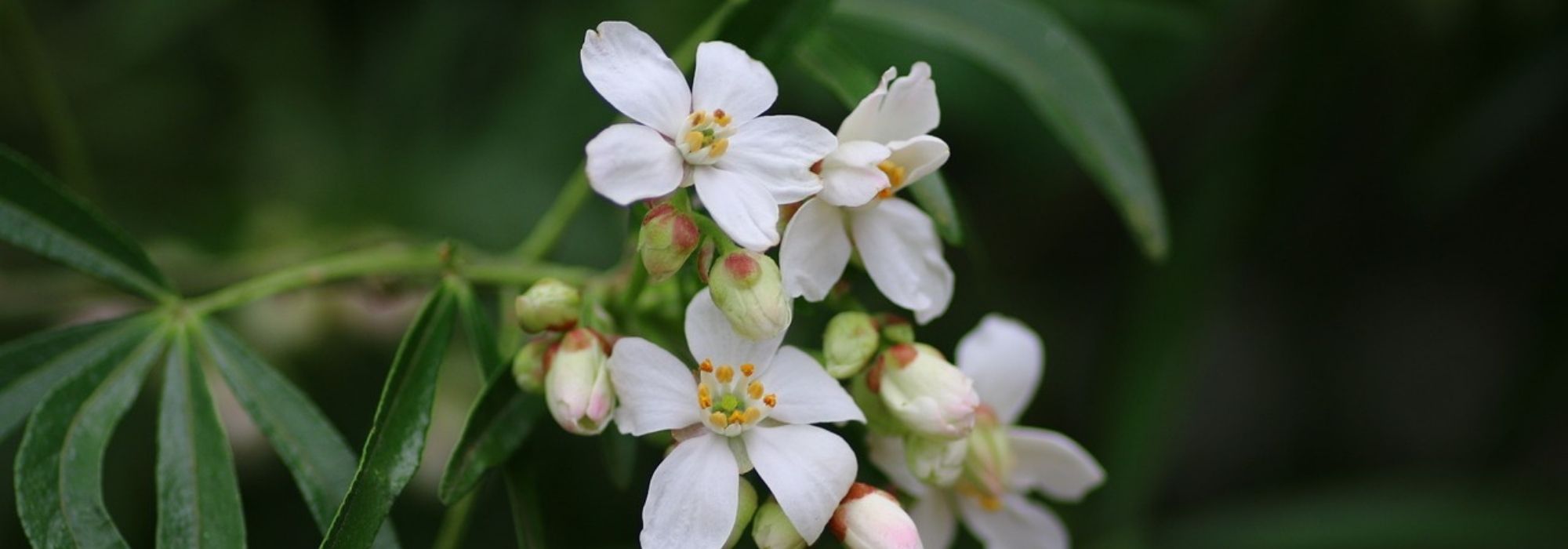
To grow a Mexican orange in a pot
How to plant and care for it?
Contents
Choisya ternata is a bush with evergreen, green or golden foliage that offers several flowerings throughout the year. Very fragrant, its white, nectariferous flowers appear abundantly in spring and more sparingly in late summer. Native to Mexico, with a scent reminiscent of orange blossom, it is better known as Mexican orange blossom. Slow-growing, its habit, rather bushy, naturally becomes rounded with age to reach up to 2 m in height and spread if not pruned. Perfect for small gardens, as a bush or in a hedge, it can also be planted easily in a pot to enjoy on a balcony or terrace. Discover our tips to successfully grow Mexican orange blossom in a pot !
→ Find out more about the Mexican orange blossom with our comprehensive fact sheet; also see our video on the Choisya
What exposure for Mexican orange blossom in a pot?
Easy to grow in most regions of France, Choisya ternata tolerates temperatures down to -10 °C to -15 °C in ground, though it is more sensitive to cold in its early years. However, when grown in a pot, it suffers from temperatures as mild as -5 °C to -7 °C. Likewise, if this shrubs tolerates summer drought well, in a pot it remains more vulnerable than in ground. Plant in morning sun or in partial shade if exposure is hotter and might scorch the foliage, and sheltered from cold winds
When to plant it?
Like all evergreen bushes, Mexican orange must be planted in spring or early autumn. In a region with a montane or continental climate, spring planting is recommended, as this gives it the whole growing season to establish.
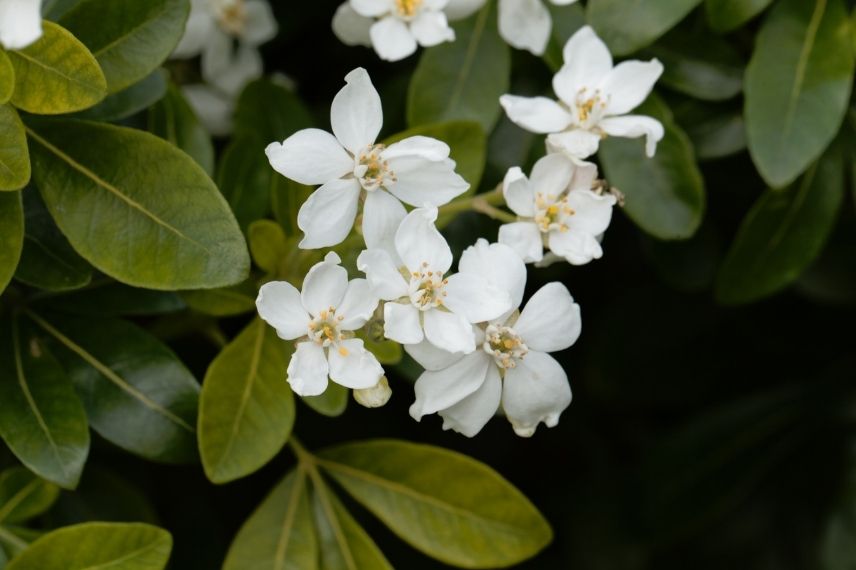
Choisya ternata
Discover other Choisya - Mexican Orange Blossom
View all →Available in 0 sizes
Available in 4 sizes
Available in 0 sizes
Available in 2 sizes
Available in 4 sizes
Available in 3 sizes
Available in 2 sizes
Available in 1 sizes
Available in 1 sizes
Available in 2 sizes
How to pot a Mexican orange blossom?
To grow a Mexican orange in a pot or tub, choose a container at least 30 to 40 cm deep and wide — roughly 30 litres, as it appreciates a large volume of soil.
Overall it prefers neutral or acidic soils, but tolerates alkaline conditions. Although this shrub is not very demanding, it needs a substrate that does not dry out, is well drained and fertile.
- Before planting, soak the rootball in a bucket of water for a few minutes ;
- Meanwhile, place a 5 cm layer of clay pebbles on the bottom ;
- Cover them with a drainage fleece so the potting compost does not block the drainage hole ;
- Then mix good garden soil (or potting compost), well‑rotted compost and river sand ;
- Place the Mexican orange in the centre of the pot and fill with the substrate, then firm down and give a generous watering ;
- Apply a surface mulch to help keep the soil cool during summer.
How to care for it?
Pruning Mexican orange
Pruning is not necessary during first three years. Afterwards, Mexican orange in a pot can be lightly pruned after its first flowering between May and June to keep a compact habit and encourage a repeat flowering in autumn. To do this, remove dead or damaged branches and prune all others by half.
How to water Mexican orange?
Provide generous watering once or even twice a week in summer if very hot and dry; then gradually reduce to once a month in winter, preferably allowing substrate to dry between waterings. Finally, increase slightly with spring.
What fertiliser for Mexican orange?
Each spring, spread a little well‑rotted compost on surface of the pot. Or if you don’t have compost, use a fertiliser for flowering shrubs, low in nitrogen and rich in potassium. In both cases, fork it into the surface, then water well.
When to repot Mexican orange?
Mexican orange in a pot should be repotted in early spring every two to three years, each time into a slightly larger container. If not repotted, simply add some compost to surface.
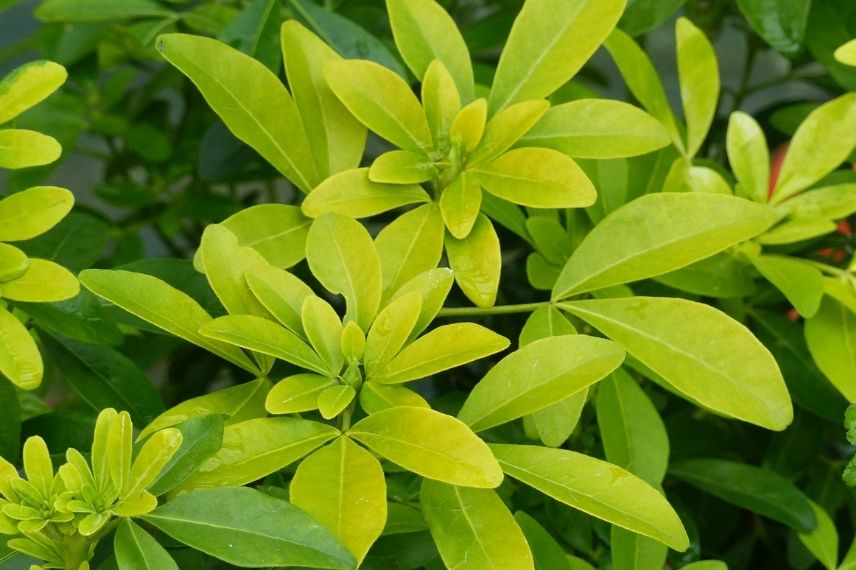
The best varieties to grow in pots
Mexican orange blossom varieties all offer aromatic foliage and differ mainly in colours – whether in leaves or flowers :
- Choisya ternata ‘Goldfinger’, with pinkish-white flowering and golden foliage
- Choisya ternata ‘White Dazzler’, floriferous, with finely divided foliage
- Choisya ternata ‘Sundance’ and its golden-yellow foliage turning to soft green
- Choisya ternata ‘Snow Flurries’, with finely cut foliage and large, scented, white pompon-like flowers
- Choisya ternata ‘Harrinora’ and its grey-green, finely divided foliage, highlighted by white, scented flowering.
- Choisya ternata ‘Aztec Gold’, with elegant, bright leaves scented of citrus trees and green peppers.
- Choisya ternata ‘Aztec Pearl’, with magnificent leaves ranging from light green to dark green through the year and flowers tinged with pink.
- Choisya ternata ‘Scented Gem’, with flowering candy-pink in bud and white in corollas.
- Choisya ternata ‘Apple Blossom’ with beautiful pale-pink flowers and fragrant foliage when crushed.
How isn't my Mexican orange blossom flowering?
Traditionally floriferous, Choisya ternata that does not produce flowers is a sign of :
- Nutrient-poor soil: to correct this, simply add a fertiliser for flowering shrubs or compost in spring ;
- Unsuitable location: it needs light to flower well! Move it to a brighter spot.
- Lack of water: when young, Mexican orange blossom requires a minimum of water – especially during long droughts. To maintain consistent moisture, simply spread a layer of mulch over the top.
If flowering is absent in first year, prune it nevertheless, then apply compost or fertiliser in spring to encourage regrowth.
Further reading
Discover our complete guide to growing Mexican orange.
- Subscribe!
- Contents
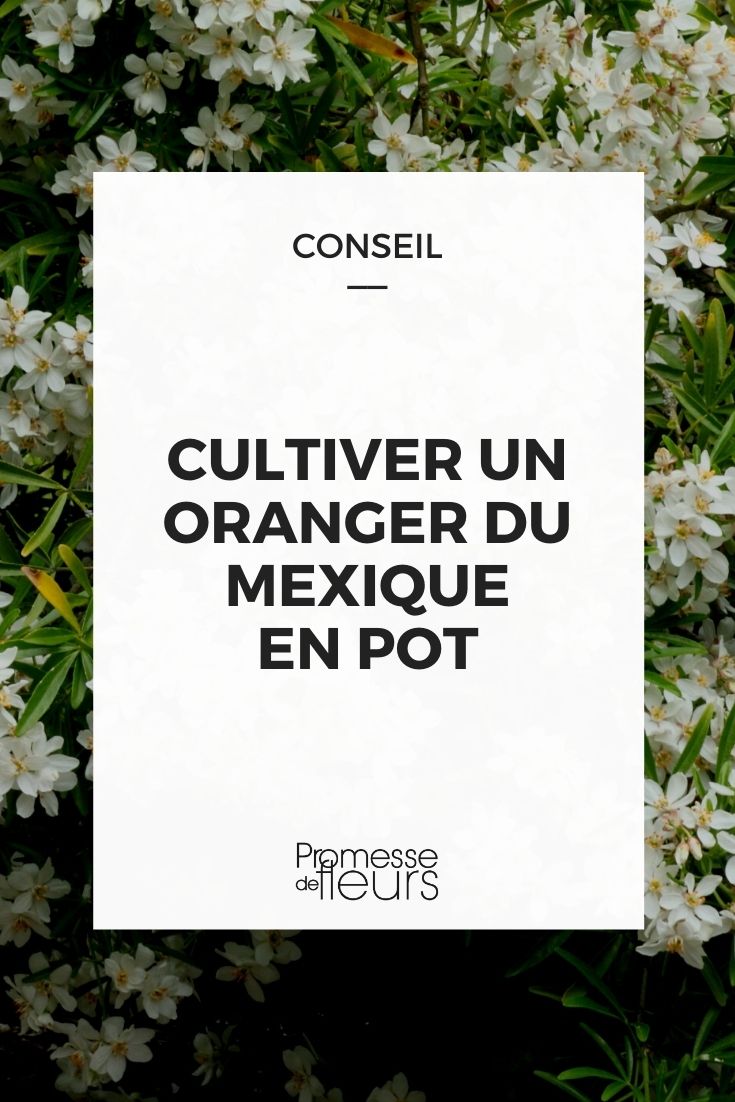































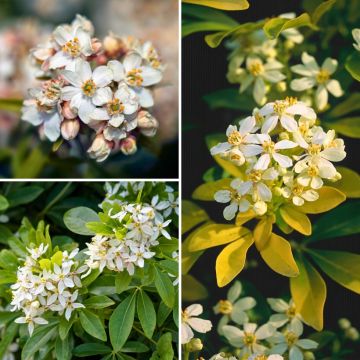
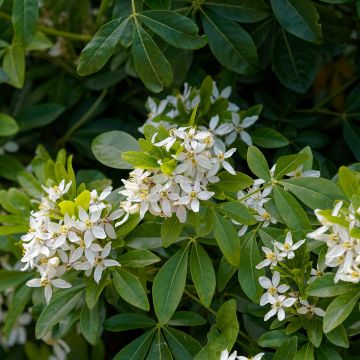
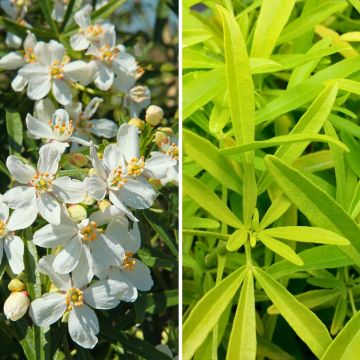
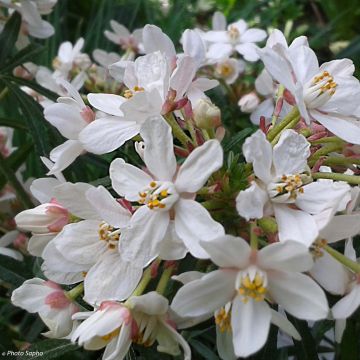
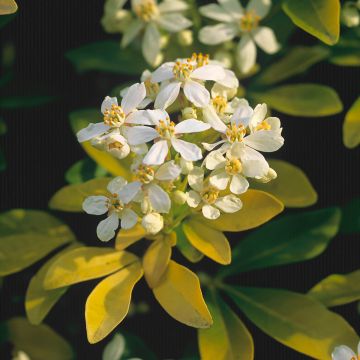
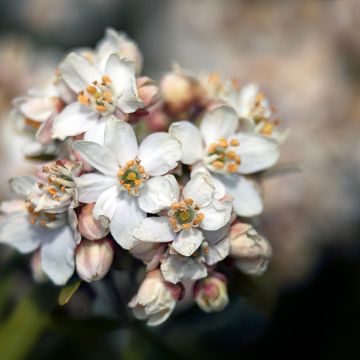
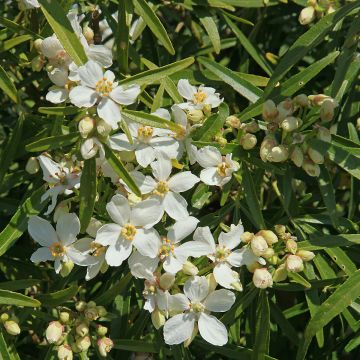

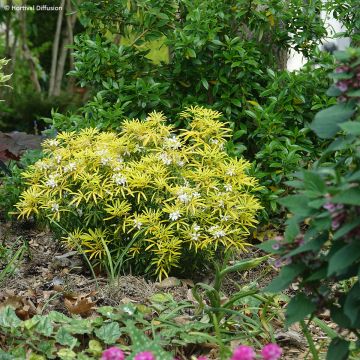

Comments